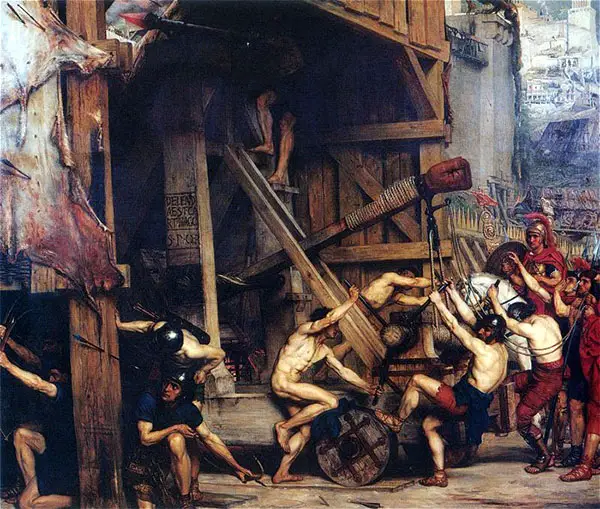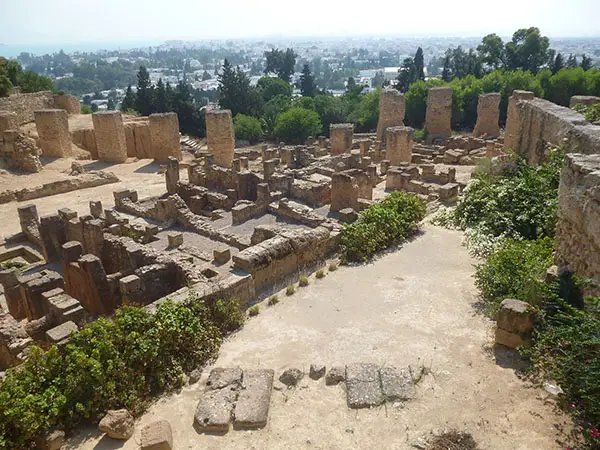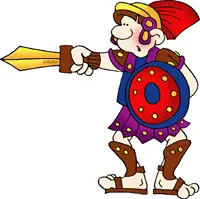Third Punic War
The Third Punic War was the last and shortest of the three wars between Carthage and Rome. After the Second Punic War ended in 201 B.C.E., the Carthaginians were forced to pay tribute to the ancient Romans for 50 years.
But since the Carthaginians were instrumental in almost destroying ancient Rome during the Second Punic War under the leadership of Hannibal, the Romans were full of hatred toward Carthage.

In 151 B.C.E., after 50 years of paying tribute to Rome, the Carthaginians refused to continue to pay homage. They believed the treaty to be fulfilled after 50 years. At this point, Carthage had rebuilt its wealth through trade and commerce.
The ancient Romans became skeptical of Carthage of becoming a power once again. In the same year, the Carthaginians planned an attack on neighboring Numidia, an ally of the Romans. After the Numidians repelled the attack, they sought for the Carthaginians to pay tribute to the Numidians for 50 years.
Rome was not happy with the Carthaginian’s decision to go to war with Numidia. They began to raise an army to go to North Africa. Both sides tried to negotiate a new treaty.
The Romans wanted the Carthaginians to send them 300 children of noble persons in return for self-governance and their land. Even after the Carthaginians sent the 300 children as hostages, the Romans landed in Utica, a nearby city of Carthage in 149 B.C.E.
After landing a new army in North Africa, the Romans demanded that the Carthaginians give them all of their weapons, disband their army, and move ten miles inland from the city of Carthage.
The Romans were somewhat in shock when the Carthaginians refused the terms and stopped the negotiations with Rome. Thus, the Third Punic War started between Carthage and Rome.
Devastation of Carthage
After negotiations were canceled, the Carthaginians recalled their 30,000 man army that had attacked Numidia to support the city of Carthage.
Inside the 20 miles of fortified walls that surrounded Carthage, more than 400,000 people lived. The Romans found this to be difficult because, along with reinforced walls, the Carthaginians had constructed numerous ditches for protection and had a big port to help supply the city during times of being under siege.
The Romans faced other obstacles, too, in trying to cut off the supply lines into the city.
From 149 B.C.E. to 146 B.C.E., the Romans laid siege to Carthage. The Carthaginians used numerous counter-attacks to repel the Romans, including burning the Roman fleet of ships in the harbor several times.
In addition to counter attacks in the port, the Carthaginians burned the Roman siege machines when possible. The Romans were also hampered by a plague that swept through their encampment in 148 B.C.E.
At this point, the Romans sent a new commander named Scipio Aemilianus, the grandson of Scipio Africanus, to fight against Carthage.

He arrived in Utica at the right time in 147 B.C.E. to help save the Romans from defeat. The Romans, under the command of Scipio Aemilianus, began to cut off supply lines more effectively. He had his army of men build a siege wall around the city’s harbor.
But the Carthaginians were able to break the harbor blockade momentarily when 50 ships sailed into the harbor and played havoc on the Roman ships.
In that same year, Scipio Aemilianus decided to attack a nearby town called Nepheris held by the Carthaginians. He surrounded the Carthaginian army of 7,000 to 10,000 men and defeated them with only a few thousand Carthaginian soldiers escaping back to Carthage.
The Roman commander then continued his siege on Carthage, which forced the Carthaginians to have supplies arrive from the interior of Africa and not from the sea.
In the following three weeks, the Roman siege took a toll on morale within the city of Carthage. In the spring of 146 B.C.E., the Roman army broke through to the city.
For six days, the Carthaginians turned every home into a new battle with the Romans. This forced the Romans to bring in more soldiers day after day.
Eventually, the Romans defeated the citizens of Carthage and sold the remaining 50,000 inhabitants into slavery. After a few more days, Carthage was burned to the ground.
Facts about the Third Punic War
- The Third Punic War lasted from 149 B.C.E. until 146 B.C.E. The war was the shortest of three Punic Wars fought between Rome and Carthage.
- The war started when Carthage attacked Numidia after finishing paying tribute for 50 years to Rome after the Second Punic War.
- Carthage was fortified by 20 miles of walls and hundreds of ditches that helped repel Roman soldiers.
- The Romans tried to blockade the harbor but were unsuccessful due to counter attacks by the Carthaginians.
- In 147 B.C.E., the Romans sent Scipio Aemilianus, the grandson of Scipio Africanus, to lead the army.
- The city of Carthage had upwards of 400,000 inhabitants and was under siege for three years.
- In 146 B.C.E., the Romans broke through to the city and began to kill the inhabitants as well as Carthaginian soldiers who waged war from one house to another for more than six days.
- After the Romans defeated the Carthaginians, there were 50,000 inhabitants that were sold into slavery, and the city was totally destroyed.
What did you learn?
- How many years did the Third Punic War last?
Three years
- What was the name of the grandson of Scipio Africanus who led the Roman army?
Scipio Aemilianus
- How many miles of fortified walls surrounded the city of Carthage?
20 miles
- What happened to the 50,000 Carthaginians that survived the siege of Carthage?
They were sold into slavery
- In what nearby city to Carthage did the Romans land a large army under the command of Scipio Aemilianus?
Utica



